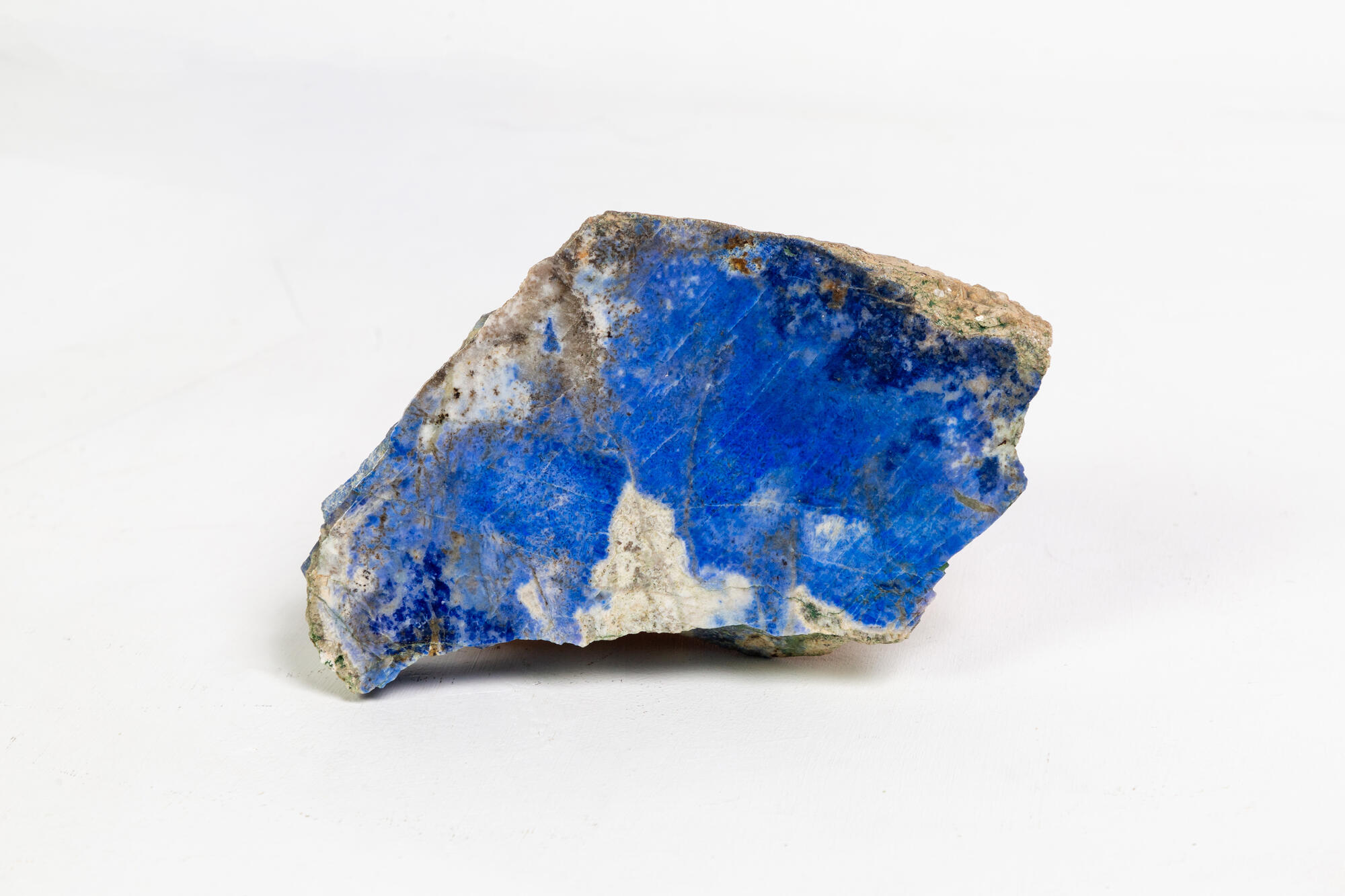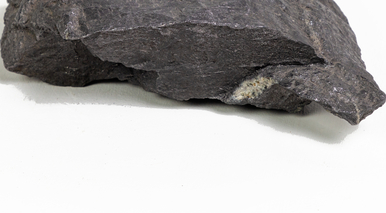The word ‘azure’ comes from the Persian ‘lajvard’, which translates as blue stone. In the Middle Ages, lazurite was called lapis lazuli, and the modern name appeared in the 18th century. At that time, only one lazurite deposit was known. It was in Badakhshan, Afghanistan. This deposit is still the richest, and the most valuable specimens of lazurite are extracted there. However, in 1784, the famous Siberian explorer Eric Laxman discovered a deposit on Lake Baikal on the banks of the Slyudyanka and Malaya Bystritsa Rivers. Later, lazurite deposits were discovered in South America, Myanmar, and Tajikistan.
The color of lazurite in nature varies from pale turquoise to purple. Baikal lazurite is characterized by an inky shade of purple-blue color and is not inferior in quality to stones from Afghanistan.
Various jewelry and souvenirs are made from lazurite. A rich catalog of colors and shades allows the mineral to be perfectly combined with precious metals, such as platinum, gold, and silver. As a beautiful ornamental stone, lazurite has attracted attention for a long time. Ancient products made of lazurite in the form of bowls, caskets, rings, figurines, amulets, and many trinkets are widely known. In the 17th century, lazurite was used for decoration of jewelry, furniture, and fireplaces. In the form of a thin facing material, it was used for inlays in combination with gold, bronze, and other metals. Cornflower-blue minerals with pyrite inclusions were especially valued. This stone can be seen in St. Petersburg in the columns of St. Isaac’s Cathedral or on the walls of the Winter Palace. In the Hermitage, it is possible to find lazurite vases and other products made from this stone.
Jewelry varieties include dense lazurite of dark blue, cornflower blue, and purple colors, without visible light inclusions. It is processed by cabochon or plates. Numerous golden spangles, i.e. inclusions of pyrite, are common in the most expensive Badakhshan lazurite. It is believed that pyrite reduces the value of lazurite, but there is another opinion, according to which a small amount of pyrite evenly distributed over the mineral increases its value. Jewelry made of it is not inferior in price to jewelry made of gold.
The color of lazurite in nature varies from pale turquoise to purple. Baikal lazurite is characterized by an inky shade of purple-blue color and is not inferior in quality to stones from Afghanistan.
Various jewelry and souvenirs are made from lazurite. A rich catalog of colors and shades allows the mineral to be perfectly combined with precious metals, such as platinum, gold, and silver. As a beautiful ornamental stone, lazurite has attracted attention for a long time. Ancient products made of lazurite in the form of bowls, caskets, rings, figurines, amulets, and many trinkets are widely known. In the 17th century, lazurite was used for decoration of jewelry, furniture, and fireplaces. In the form of a thin facing material, it was used for inlays in combination with gold, bronze, and other metals. Cornflower-blue minerals with pyrite inclusions were especially valued. This stone can be seen in St. Petersburg in the columns of St. Isaac’s Cathedral or on the walls of the Winter Palace. In the Hermitage, it is possible to find lazurite vases and other products made from this stone.
Jewelry varieties include dense lazurite of dark blue, cornflower blue, and purple colors, without visible light inclusions. It is processed by cabochon or plates. Numerous golden spangles, i.e. inclusions of pyrite, are common in the most expensive Badakhshan lazurite. It is believed that pyrite reduces the value of lazurite, but there is another opinion, according to which a small amount of pyrite evenly distributed over the mineral increases its value. Jewelry made of it is not inferior in price to jewelry made of gold.



